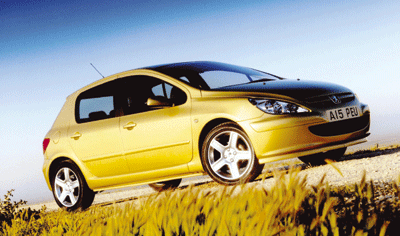The 306 had been one of the most popular small family cars on the market. When the 307 arrived, it ticked most of the boxes on buyers’ wish lists: it’s safer and more comfortable than the old model and has an excellent range of petrol and diesel engines. But a lacklustre drive failed to capture the imagination of new buyers in the same way as the 306 did during the nineties.
Line-up
Five trim levels were initially offered: Style, Rapier, LX, GLX and XSi. There was a choice of seven interiors and five ‘ambiences’, which gave 79 combinations of cabin finish. Estate and seven-seat SW models were added in 2002.
A shake-up in May 2003 saw five trim levels become four: entry-level Style and top-spec XSi remained, but S replaced Rapier, and GLX became SE. LX was discontinued. The CC (Coupe Cabriolet), with its metal folding roof, was launched in September 2003.
A facelift in mid-2005, saw a 407 look to the front, interior improvements and better specifications.

Driving performance
Owners trading up from a 306 to a 307 will immediately notice a difference on the road. The 307 is weighed down by a lot more safety equipment and comfort features, so doesn’t feel as nimble. But it’s safe, solid and easy to drive. Suspension copes well with bumps but doesn’t roll too much around corners. Steering is light, but chunky rear pillars restrict visibility.
Comfort
Because of the 307’s tall styling, there’s plenty of headroom. It’s a bit more restricted in the three-door, but all cars have plenty of interior space, although getting in and out of the rear of the three-door elegantly needs some practice. Seats are supportive, but aren’t as comfy as some rivals. Air-conditioned glovebox is ideal in summer for keeping drinks and snacks cool.
Engines
The petrol engines (1.4, 1.6 and 2.0) are fairly lively, but a little unrefined. The best mix of performance and economy comes from the 1.6. Diesel models (2.0 with 90bhp or 110bhp and a discontinued 1.4) are both frugal and fun to drive, especially the D-Turbo 110bhp version.
Safety
Four-star Euro NCAP rating is good, but not class leading; six airbags (including front and rear curtain bags), ABS and Electronic Brake Distribution are on all models. An alarm is added to the standard immobiliser from Rapier models upwards.
On the forecourt
Fast movers: 307 2.0 HDi 110 - A diesel engine with punch that offers more than 54mpg Trade: 01Y-0505: £6,400-£10,600 Retail: 01Y-0505: £6,800-£12,700
307 1.6 Rapier: The 1.6 is carefree everyday motoring for most owners; Rapier comes with a few goodies like alloy wheels and electric windows. Trade: 01Y-0353: £4,500-£6,200 Retail: 01Y-0353: £5,200-£7,300
Ones to avoid: 307 1.4 - Underpowered for 307’s big body, especially when laden 307 SW Rear seats are for the small children only; buyers look for more useable seven seaters, like Zafira.
In the workshop
Owners report damage to bumpers and trim and some stone chipping to the bonnet. The wiper stalks can come loose or break.













Login to comment
Comments
No comments have been made yet.